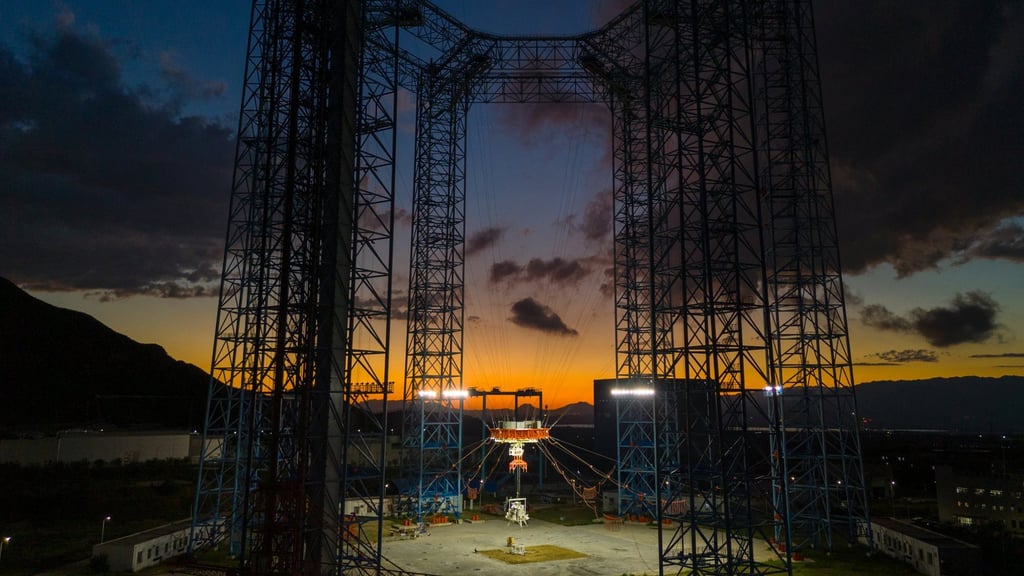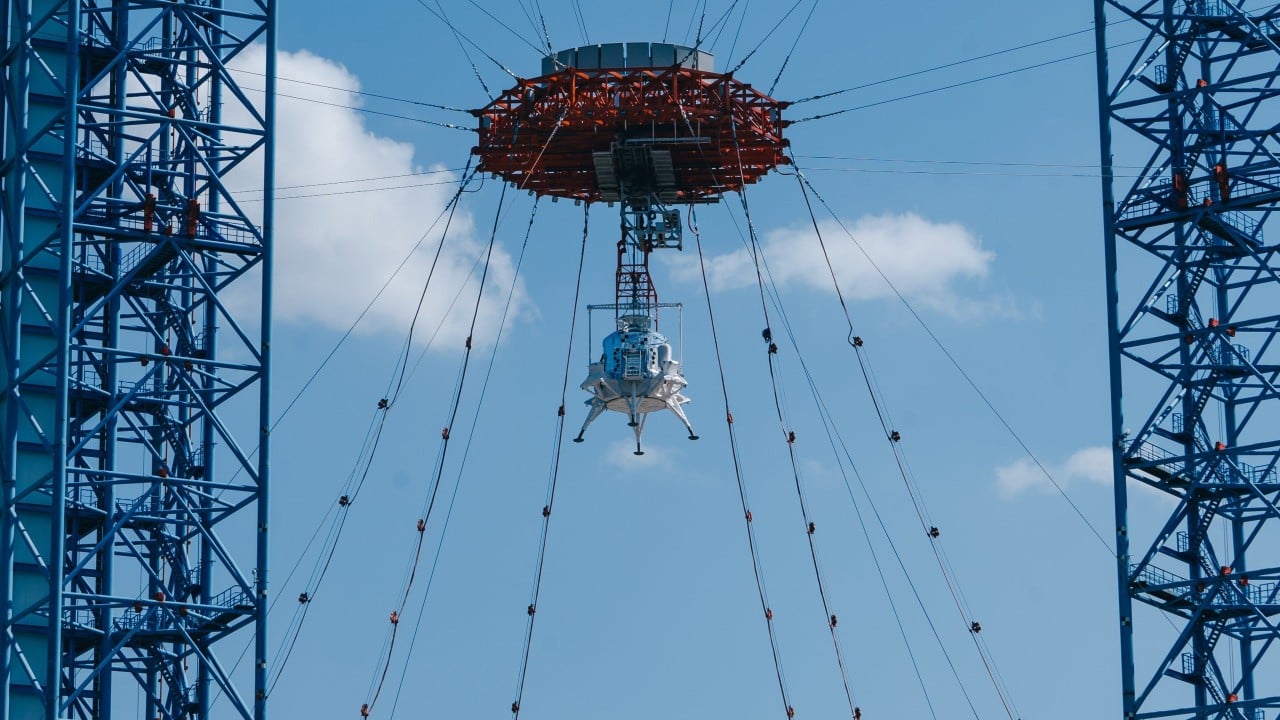China has completed a critical landing and take-off test of its crewed lunar lander, moving a step closer to putting astronauts on the moon before 2030.
Advertisement
A prototype of the four-legged Lanyue (“embrace the moon”) lander – designed to ferry two astronauts between lunar orbit and the surface – underwent a comprehensive trial on Wednesday in Huailai County, in north China’s Hebei province, the China Manned Space Agency (CMSA) announced on Thursday.
Using giant tether towers to mimic lunar gravity and a cratered field to simulate the moon’s rugged terrain, the test was designed to ascertain how well Lanyue’s systems work together, from its landing and ascent design to the control system, engine shutdown on touchdown, and coordination among guidance, navigation and propulsion systems.
“This marks a major milestone in China’s effort to develop a crewed lunar landing mission,” the space agency said, adding it was also the country’s first full test of a crewed spacecraft’s potential ability to land on, and take off from, an extraterrestrial body.

Footage aired by state broadcaster CCTV showed a lunar rover mounted on the lander’s side, along with a ladder attached to one leg for astronauts to climb down to the lunar surface. During the descent, main engines and attitude-control thrusters emitted yellowish exhaust – likely nitrogen dioxide from the propellant.
Advertisement
Lanyue would serve as astronauts’ habitat, power source, and data hub during their stay on the moon, CMSA said. Given its many functions, the lander was especially challenging to design, Huang Zhen, of the China Aerospace Science and Technology Corporation, said.

